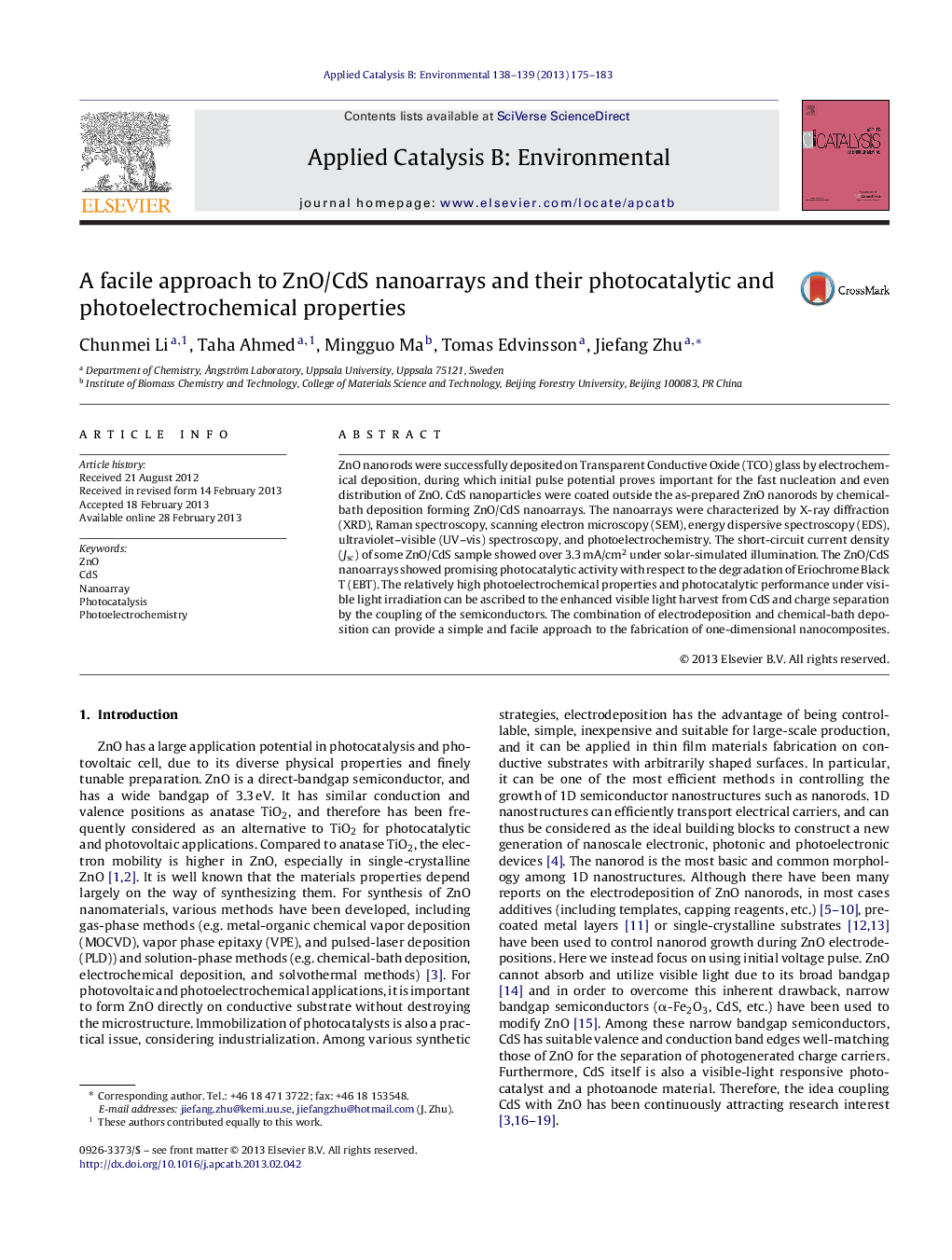| Article ID | Journal | Published Year | Pages | File Type |
|---|---|---|---|---|
| 46221 | Applied Catalysis B: Environmental | 2013 | 9 Pages |
ZnO nanorods were successfully deposited on Transparent Conductive Oxide (TCO) glass by electrochemical deposition, during which initial pulse potential proves important for the fast nucleation and even distribution of ZnO. CdS nanoparticles were coated outside the as-prepared ZnO nanorods by chemical-bath deposition forming ZnO/CdS nanoarrays. The nanoarrays were characterized by X-ray diffraction (XRD), Raman spectroscopy, scanning electron microscopy (SEM), energy dispersive spectroscopy (EDS), ultraviolet–visible (UV–vis) spectroscopy, and photoelectrochemistry. The short-circuit current density (Jsc) of some ZnO/CdS sample showed over 3.3 mA/cm2 under solar-simulated illumination. The ZnO/CdS nanoarrays showed promising photocatalytic activity with respect to the degradation of Eriochrome Black T (EBT). The relatively high photoelectrochemical properties and photocatalytic performance under visible light irradiation can be ascribed to the enhanced visible light harvest from CdS and charge separation by the coupling of the semiconductors. The combination of electrodeposition and chemical-bath deposition can provide a simple and facile approach to the fabrication of one-dimensional nanocomposites.
Graphical abstractFigure optionsDownload full-size imageDownload as PowerPoint slideHighlights► A facile and controllable method to prepare ZnO/CdS nanoarrays is reported. ► Initial voltage pulse is very important for the fast nucleation and even distribution of ZnO on FTO glass during electrodeposition. ► The promoting effect between coupled ZnO and CdS is proved. ► The optimum composition of ZnO/CdS nanoarrays also varies with the circumstances of their testing and application.
